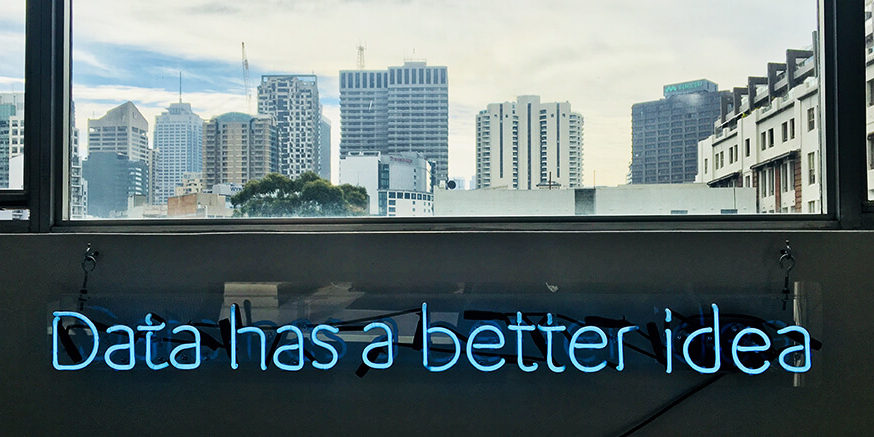Every business uses data to drive their business decisions. So, why the need for predictive analytics if you are already using data? Comparing data with and without predictive analytics is like comparing a domestic cat to a Bengal Tiger–there is a vast difference.
A business might have a good idea of their customers and the average spend of each. But, averages do not allow you to treat every customer as an individual, nor can they predict outcomes of future interactions your business may have with individual customers. This is where big data and predictive analytics step in to make the difference. They empower organizations in any industry to make decisions for the future by transforming uncertainty into meaningful and actionable insights.
Data Used in Predictive Modeling
Big Data is the basis for all predictive modeling tools. Predictive Analytics is only as good as the data it has to evaluate. This is why it is important to combine and clean up data from disparate data sources to produce accurate analyses. The key fact is that no single data point should be allowed to assert an undue influence.
The process involves modeling mathematical frameworks by analyzing past and present data trends to predict future behaviors. The data needed for predictive analytics is usually a mixture of historical and real-time data.
1. Historical Data
Just like it sounds, historical data is looking at the past. For example, data from a company’s loyalty program can be used to analyze past buying behavior and predict the kind of promotions that the customer will likely participate in. Businesses collect vast amounts of data. Predictive models identify patterns from such historical and transactional data to create mathematical models that capture trends. They also can create predictive scores for whatever the data pertains to-customers, patients, product SKU etc. It then applies the predictive scores to current data to identify risks and opportunities.
Historical Data is both structured and unstructured.
Structured Data
Structured data is more organized and defined, often stored in places such as databases. This structure makes it more accessible for predictive analysis. Some examples of structured data include:
- Past purchase/ordering records
- Production logs
- Inventory records
Unstructured or Text Data
Unstructured data tends to be free-form, making it more difficult to work with. In order to use this data for Predictive Analytics, it will need to be prepared and structured. One way to do so is through Text Analytics, using natural language processing (NLP). A commonly cited figure is that 80% of the data being generated is in the form of unstructured data. Unlocking this potential is already being recognized as a next big step in big data collection. Companies that are ignoring this deep value data are putting themselves at a disadvantage. Here are some of the unstructured data types that are being used in predictive analytics:
- Past social media interactions like tweets, posts and online reviews
- Emails & company communications
- Audio and video files
2. Real-Time Data
We are all reacting to real-time data in our daily lives. Much of our decision making is based on this data. Your GPS can suggest the best route you can take to avoid traffic, movie reviews help us decide what to watch and we can find out what topics are trending in the news and on social media sites.
Real-time data is often unrelated data that companies have never traditionally considered. To get a picture of how this is used, consider the case of hotels and resorts that are pulling in weather and flight information to predict occupancy rates. Real-time data includes
- Weather
- Traffic
- Air Traffic
- Stock Markets
- Social Media APIs
- Company Sales/Registrations
- Company records of all kinds (patient data, product data, etc.)
The level of technology that is now available means that companies are at a disadvantage if they are still using outdated systems. Real-time predictive analytics can be a decision differentiator of seconds, minutes or hours based on the industry. Here are some use cases to illustrate the importance of real-time predictive analysis.
Predictive analysis in seconds
The best use case is preventing fraudulent transactions where the system takes just seconds to decide.
Predictive analysis in minutes
Customer service interactions and customer satisfaction can be decided within minutes. In this timeframe, the predictive analytics system should be able to provide context-specific recommendations that should quickly adapt based on current interactions.
Predictive analytics in hours
Machine downtime can cost a company big losses. Predictive maintenance, hours or even days ahead, will lead to better production. Similarly, predictive analytics is making itself known in creating staffing schedules by using real-time and historical data to determine the number of staff needed at any given time.
Ready to take your business to the next level? Get in touch with a developer today and find out how Predictive Analytics can benefit you. The team at 7T specializes in predictive analytics along with a host of other technologies such as natural language processing, augmented reality, artificial intelligence, and blockchain. Our Predictive Analytics platform, Sertics, can help your team analyze data, leverage predictive modeling and make better business decisions.








